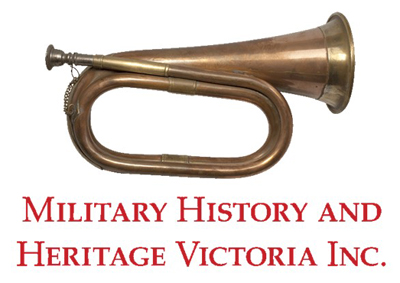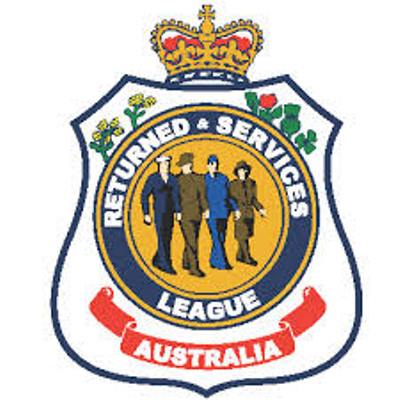The fourth year of World War 2 saw the German Army suffer its first major defeat at Stalingrad, and an Allied victory in North Africa enabled an invasion of Italy which ended in its surrender.

In South-East Asia, British forces continued to engage in heavy fighting against the Japanese in Burma.
For Australia, on the military front, our forces were involved in heavy fighting on the New Guinea battlefields, including the defeat of the Japanese at Wau and the Huon Peninsula. Naval and air forces defended our coastal shipping from enemy sea mines and submarines. RAAF squadrons worked with US allies to defend Darwin and Northern Australia from ongoing Japanese air raids. They then combined to inflict a stunning defeat on Japanese shipping in the Battle of the Bismarck Sea. Special forces were engaged in clandestine operations and the propaganda war greatly increased as significant events of the war were highlighted to continue to win hearts and minds on the home front.
The MHHV conference to explore this fascinating year was convened by Dr Daryl Moran at Waverly RSL. The presentations were exceptional and offered considerable new perspectives on the campaign. 34 delegates gave the 7 eminent speakers their rapt attention over the day.
The keynote speaker Dr Liam Kane set the scene. At the start of 1943, the Allied forces were drained and needed to rebuild. They had absorbed many hard lessons during the Papuan campaign and now needed to distribute that knowledge and skills. This process was enhanced by setting up the Jungle Warfare Division where they could train under realistic jungle conditions. The US Navy was rapidly building up logistical and transport capability and the US Air Force had reached parity with the Japanese and was working on its tactics to destroy shipping. The stage was set to beat the Japanese.
James Eling explained that in preparation for the New Guinea campaigns, the 9th Division, recently back from the Middle East, was first to train at the Jungle Warfare Centre and when they graduated went to battle, cross pollinated with experienced officers from other divisions. Emphasis was also placed on relearning amphibious operations. Planning for the campaign was carried out by the Australians, the only time for a joint Australian/US force for what was to become the largest and most complicated operation to date. Capturing Lae resulted in few deaths, the most arising from an aviation crash. Unfortunately a large number of Japanese escaped. Eling discussed the rest of the campaign including the difficult operation taking Finschhafen.
In addition to providing a graphic account of the air war and the planes, Dr Tom Lewis revealed hardships endured by the Australian pilots in theatre. Early in the war they were woefully underequipped, initially suffering heavily against Japanese Zeros but later did considerably better with higher performance planes including Kittyhawks and Beaufighters. All planes were dreadfully uncomfortable, cramped, without heating (it was freezing at altitude) and unpressurised. Despite the danger from enemy planes, 6 out of 7 airmen died from accidents which made the RAAF the deadliest Australian service.
James Brien explained that the Battle of Bismarck Sea was a key factor in the success of the 1943 land campaign. The key outcome of that battle was destroying a Japanese convoy with men and supplies sent to reinforce Lae just prior to the Allies invading the city. Prior to this, the Allies had a poor record of sinking Japanese shipping with air power because they were using the US doctrine of bombing ships from altitude. To solve this problem, US General Kenny went on a far-reaching innovation program. He called for ideas from everywhere, rigorous tested the most promising ideas followed by training the air force. The ultimate result was a highly successful orchestration of Allied air power and the annihilation of what was to be the last Japanese convoy to New Guinea with the loss of nearly 3,000 Japanese.
Dr Andrew Kilsby reviewed the patchy history of special operations in the war. Special operations, excluding the Coast Watchers, were intended to obtain information from the enemy and/or cause damage. The most famous of these was Operation Jaywick, in which operatives canoed into Singapore Harbour and sunk three ships and damaged three others. While this was considered a great success it had limited impact on winning the war. Unfortunately, it also encouraged a further 70 operations to be launched. The results of those operations were, at best, mixed but were more often disastrous and resulted in the elimination of many teams.
Dr Daryl Moran reviewed the history of Australia’s propaganda with many colourful examples. He noted that it first came to prominence during WW1 with the development in printing and radio technology. Propaganda posters becoming very popular because they were quick to produce and their designs and colour gave them impact. In WW2, cinematography was added with many newsreels and 94 films produced. Propaganda was aimed at influencing the hearts and minds of the population, be it to hate the enemy, fight, work, build morale or whatever issues or actions the government wanted.
The conference concluded with a panel discussion.
Click on the available Presentation and Paper titles below to see and read them.
9.00 am Welcome – Major General (Retd) Jim Barry, AM, MBE, RFD, ED, Patron MHHV.
SESSION ONE |
Session Chair: Dr Daryl Moran, MHHV ‘1943’ Conference Convenor
9.10 – 9.20 am Video: Setting the Scene for Australia in 1943
Dr Liam Kane, War College, Canberra.
9.20 – 10.05 am Paper: The Campaigns in New Guinea in 1943
Major James Eling, Army Reserve, Producer of ‘The Principles of War’ podcasts.
10.05 – 10.50 am Paper: The RAN in the Pacific War in 1943
Captain Andrew Mackinnon, CSC, RAN (ret), President Naval Historical Society of Australia (Vic)
SESSION TWO |
Session Chair: Mr Tony Hastings, MHHV ‘1943’ Conference Co-Convenor.
11.20 – 12.05 am Paper: The RAAF in the Pacific War in 1943
Dr Tom Lewis, Author, Educator.
12.05 – 12.50 pm Paper: The Battle of the Bismarck Sea
James Brien, PhD Candidate, Australian National University.
SESSION THREE |
Session Chair: Professor Peter Edwards, AM, Vice-Patron MHHV.
1.50 – 2.35 pm Paper: Special Operations in 1943
Dr Andrew Kilsby, Author, Historian.
2.35 – 3.20 pm Paper: The Propaganda War in 1943
Dr Daryl Moran, Author, MHHV ‘1943’ Conference Co-Convenor
SESSION FOUR | LEGACIES and LESSONS
Session Chair: Mr Tony Hastings, MHHV ‘1943’ Conference Co-Convenor.
3.50 – 4.15 pm An Overview of 1943 in Q and A format with Guest Panelists.
4.15 – 4.30 pm A Reflection upon 1943.
Major General (Retd) Jim Barry, AM, MBE, RFD, ED, Patron MHHV.
Conference Sponsors:
Contact Brent D Taylor about this article.










